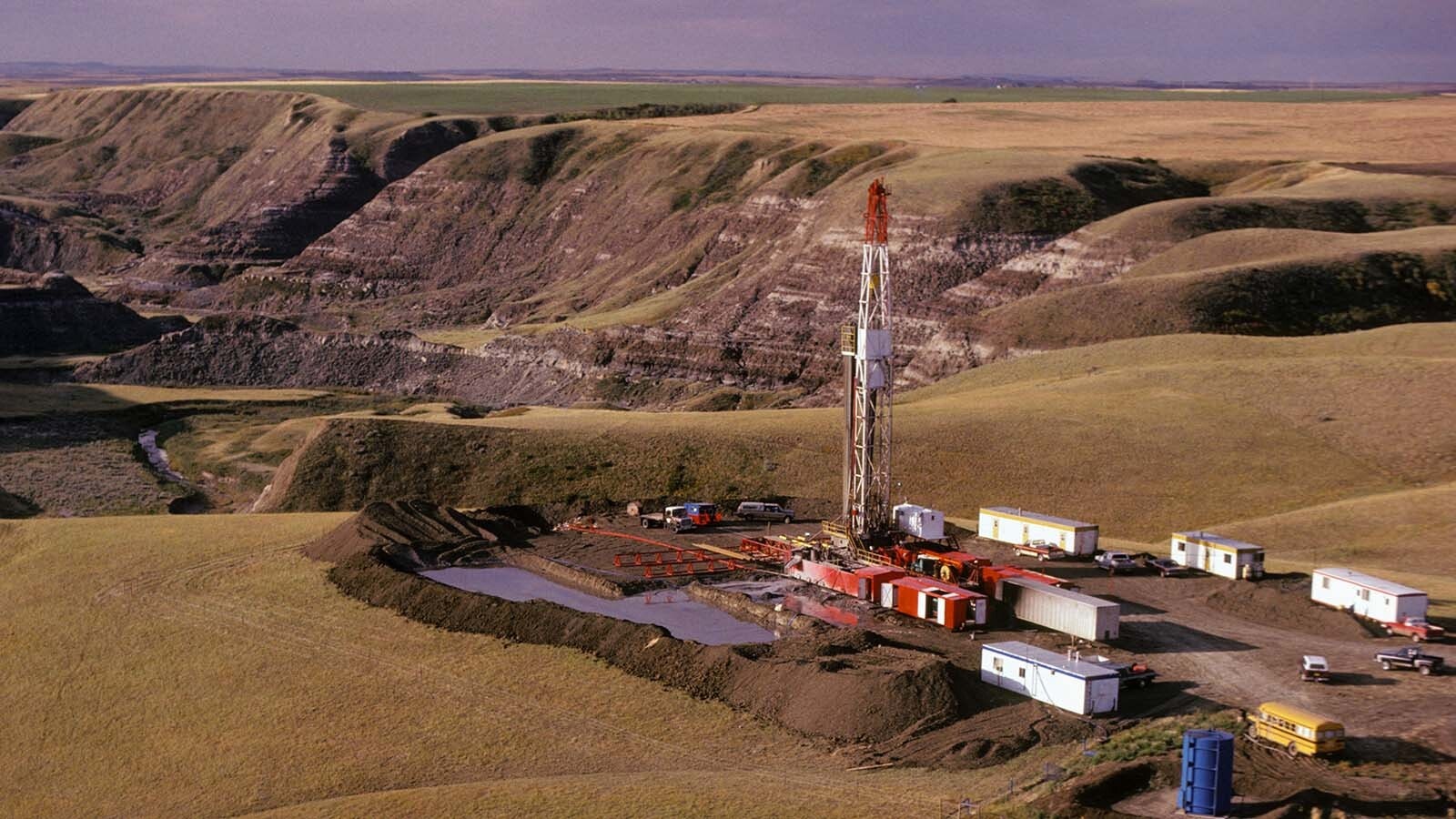Another industrial park built on an old coal mine could be coming to Wyoming’s Powder River Basin.
Since Arch Resources Inc. unveiled plans to shut down its Coal Creek mine in Wyoming’s coal-rich region nearly three years ago, the volume of coal scraped from the surface pit operation has tapered off — in fact, dramatically.
About a year ago, Campbell County commissioners and other local economic development officials began working in earnest with Arch to cushion the blow of closing the mine about 30 miles southeast of Gillette near Wright.
That’s when the idea of turning the site into an industrial park came to mind.
After all, the inevitable was coming and local officials couldn’t just sit on their hands facing a grim outlook of the closure of Coal Creek and the eventual closure of Arch’s flagship Black Thunder mine just south of it.
Arch Wants Out
While Arch hasn’t said what it’s firm timeline is for shuttering its Wyoming mines, it has repeatedly maintained a corporate stance that it wants to be out of the thermal coal business.
It announced in 2020 its plans to shut down Coal Creek and Black Thunder, and while the company continues to mine Black Thunder for the cash flow it can create, it’s tapered off Coal Creek significantly. At the same time, Arch has reported it’s accelerated its reclamation of both mine sites.
The demise of Coal Creek began in earnest in 2019, when it dropped to 2.5 million tons of production compared to the 8 million tons the year before. In the years since, the mine has continued to produce in the low 2 million tons range, except for 2021, when it pulled 3.8 million tons out.
A New Chapter
This week’s move by Campbell County to turn a chunk of the mine site into an industrial park signals a new chapter for the mine, Arch and Powder River Basin coal.
In working with Arch officials, commissioners approved plans to carve out nearly 1,500 acres from the 11,500-acre Coal Creek mine site. They also approved a plan to rezone the property with a coal tipple, rail lines, buildings and other coal facilities as heavy industrial.
Arch doesn’t want to tear up the land, or plant sagebrush and grass to comply with federal surface mining laws, but instead leave it behind as a selling point to attract others.
Repurposing a coal mine isn’t new for Campbell County.
A few miles north of Gillette, an industrial park was created on reclaimed mine land about a decade ago where the Fort Union mine had closed several decades before.
The business park attracted Atlas Carbon, which turns Power River Basin coal into activated carbon for filters, and the Wyoming Innovation Center, a 5,500-square-foot facility that researches uses for coal other than burning it, such as asphalt.
The economic development gurus in Campbell County point to this industrial park as a model for Coal Creek.
They’re not telling who they are speaking with as possible tenants or buyers for the park, but they have non-disclosure agreements with potential businesses in the works.
The businesses include everything from heavy manufacturers and alternative energy companies to others working to turn thermal coal into a non-power plant product (possibly asphalt or concrete-like building blocks).
The wheels for what to do with the mine site began turning “a couple of years ago, (when) Arch said the end of the mine was inevitable,” said Campbell County Commission Chairman Del Sheltstad.

Second Industrial Park
“That’s when we started the process of determining what the possibilities were for that property and its infrastructure, and what kind of business that we’d like to see come here,” Shelstad said. “I don’t want to pick winners and losers, but any business that brings jobs and tax revenue would be great.”
Rusty Bell, a former Campbell County commissioner who now serves as director of the Campbell County-based Office of Economic Transformation at Gillette College, is helping find potential businesses to lease out the rezoned portion of the Coal Creek land.
“That’s the end goal,” said Bell, who envisions Arch continuing with a downsized Coal Creek operation despite the company’s overture to push toward East Coast sources of thermal coal.
“We want them to continue to produce thermal coal here,” he said. “Projects don’t happen overnight; they have to be vetted.”
Kyle Wendtland, land quality division administrator for the state’s Department of Environmental Quality, applauded the rezoning gambit by the commissioners.
“I don’t see a downside to it,” Wendtland said.
Still Have To Reclaim
Typically, under federal surface mining laws, Arch would be required to backfill coal pits, recontour and reseed the landscape to “pre-mining” conditions. That includes demolishing, disassembling and otherwise disposing of buildings, rail lines and other facilities.
The rezoning move doesn’t let Arch off the hook for compliance with federal surface mining laws, Wendtland said.
Arch must still comply with its reclamation obligations for surface mining laws with the Wyoming Department of Environmental Quality, even if it wants to leave behind buildings, rail lines and other facilities on the rezoned land, Wendtland said.
“They haven’t complied with those requirements. They must still send an application in to change the approved land use … to industrial,” Wendtland said of the process, which could take up to five months to complete.
“If you try and market those facilities to some other industry, changing them to industrial zoning at the county level makes sense to me,” he added.
Arch bought its Wyoming mines in the 1990s, and Black Thunder remains one of the most productive thermal coal mines in North America. They peaked in 2014 with a combined production of 110.4 million tons of coal (101 million for Black Thunder).
Black Thunder produces roughly 25% of the thermal coal in the United States even as the company plans for its eventual closing.
Arch officials didn’t respond to Cowboy State Daily about the future of its Wyoming mines, but has said in prior earnings calls that it’s been unsuccessful finding a buyer for its PRB mines and that it will continue on an accelerated reclamation schedule.
Pat Maio can be reached at pat@cowboystatedaily.com.





